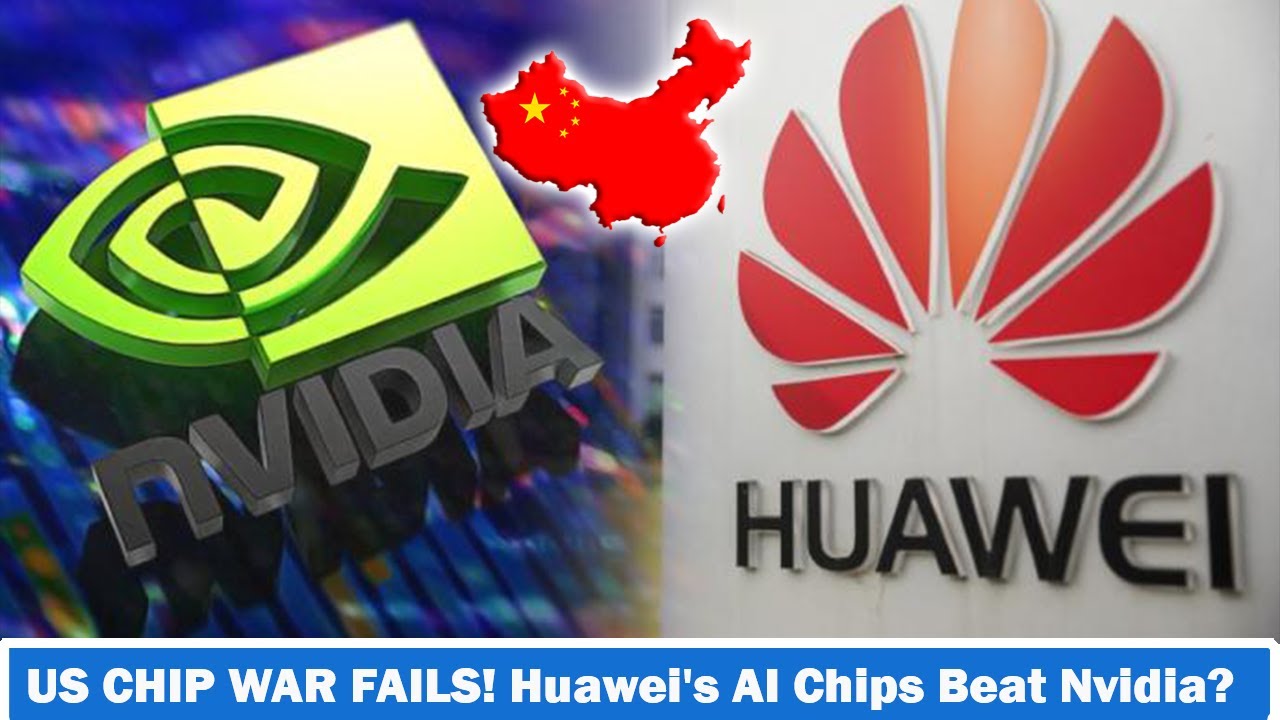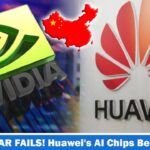
The global AI chip war is heating up, and China just made a power move.
In a bid to overcome U.S. sanctions and reduce dependence on Western technology, Chinese tech giants have unveiled next-generation AI chips that claim to rival NVIDIA’s dominance. But do they stand a chance?
In this in-depth analysis, we explore:
✔ China’s new AI chips (specs & performance)
✔ How they compare to NVIDIA’s H100 & B100
✔ The impact of U.S. export controls
✔ Can China truly compete—or is this just hype?
Let’s dive into the high-stakes battle for AI supremacy.

**1. Huawei’s Ascend 910B – The “NVIDIA Killer”?
- Performance: 256 TOPS (Tera Operations Per Second)
- Memory Bandwidth: 1 TB/s
- Process Node: 7nm (SMIC)
- Key Feature: Compatible with AI frameworks like MindSpore (China’s alternative to PyTorch).
Target Use Case:
- Large language model (LLM) training
- Autonomous vehicles
- Smart city infrastructure
Verdict: Still ~15% slower than NVIDIA’s H100 but China’s best shot yet.
**2. Biren BR100 – China’s First “Chiplet” GPU
- Performance: Up to 512 TOPS (theoretical)
- Memory Bandwidth: 2.5 TB/s
- Process Node: 7nm
- Key Feature: Uses chiplet design (modular architecture for scalability).
Target Use Case:
- Hyperscale data centers
- Military AI applications
Verdict: Promising, but mass production challenges remain.
**3. Loongson’s 3A6000 – A Domestic CPU Alternative
- Performance: Comparable to Intel’s 10th-gen i5
- Architecture: Fully Chinese-designed (no x86/ARM reliance)
- Key Feature: No U.S. tech dependencies
Target Use Case:
- Government & enterprise servers
- Sanction-proof computing
Verdict: Not an AI beast, but a strategic milestone.

| Chip | NVIDIA H100 | Huawei Ascend 910B | Biren BR100 |
|---|---|---|---|
| TOPS | 1,979 (FP8) | 256 | 512 |
| Memory BW | 3 TB/s | 1 TB/s | 2.5 TB/s |
| Process Node | 4nm TSMC | 7nm SMIC | 7nm SMIC |
| Software | CUDA | MindSpore | Open-source |
| Price | ~$30,000 | ~$15,000 (estimated) | ~$20,000 (est.) |
Key Takeaway: NVIDIA still leads in raw power, but China is closing the gap in cost efficiency.

The Chokehold on Advanced Chips
- 2022 Ban: U.S. blocked A100/H100 exports to China.
- 2023 Expansion: Restricted chipmaking tools (ASML DUV).
China’s Countermoves
- Ramped up domestic 7nm production (SMIC).
- Poured $47B into chip subsidies (2023).
- Pivoted to “chiplet” designs to bypass node limitations.
Result: China’s chip self-sufficiency rose from 15% to 35% in 2 years.

✅ Where China Has an Edge
✔ Price: 50-70% cheaper than NVIDIA’s flagships.
✔ Localized Ecosystem: Govt mandates favor homegrown chips.
✔ AI Talent: 3x more AI engineers than the U.S.
❌ Where China Still Lags
✖ Performance Gap: 7nm vs. NVIDIA’s 4nm/3nm tech.
✖ Software: CUDA’s dominance is hard to break.
✖ Supply Chain: Reliant on foreign IP & materials.
The Wild Card: “Chiplet” Tech
- By combining multiple smaller chips, China could leapfrog node limitations.
- But thermal/power issues remain unsolved.

NVIDIA’s Response
- Released sanction-compliant H20 chip for China.
- Investing in even more advanced 3nm GPUs.
Chinese Tech Giants Betting Big
- Huawei: Stockpiling Ascend chips for cloud AI services.
- Baidu/Alibaba: Testing domestic GPUs in data centers.
U.S. Intel’s Warning
- “China is 5-7 years behind but catching up fast.” – Pat Gelsinger, CEO.

2024-2025 Predictions
- China: Mass production of 5nm chips (SMIC).
- NVIDIA: Launch of B100 (2x faster than H100).
- New Sanctions: U.S. may restrict chiplet tech.
Long-Term Scenarios
🔹 Best Case for China: Achieves 70% self-sufficiency by 2030.
🔹 Worst Case: Sanctions cripple material imports (e.g., Dutch ASML tech).
Final Verdict: Is NVIDIA’s Crown at Risk?
Short-Term (2024-2026):
- NVIDIA still leads in performance & software.
- China dominates low/mid-range AI chips.
Long-Term (2030+):
- If China cracks 5nm & chiplets, competition gets real.
- But U.S. tech bans could keep China in second place.
One Thing’s Clear: The AI chip battle will define the next decade of tech supremacy.
What Do You Think?
- Will China overtake NVIDIA in AI chips?
- Should the U.S. tighten or loosen sanctions?










